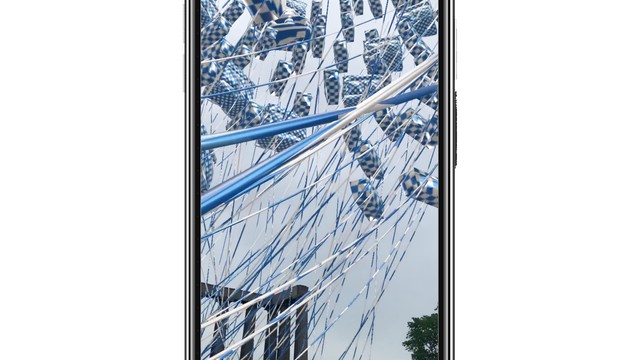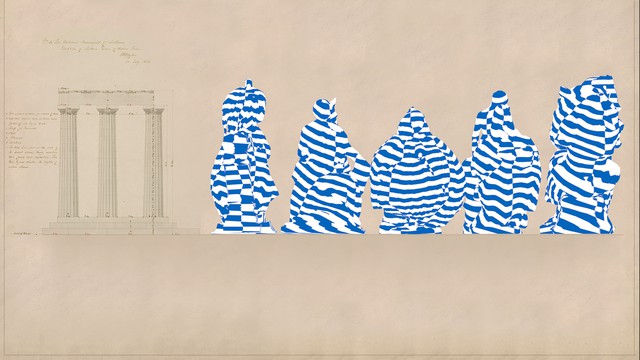Pneu-History 2023, United States of America, Cambridge
Re-completing the Scottish National Monument






This project re-completes the National Monument of Scotland on Calton Hill in Edinburgh, reviving various historical initiatives to complete the seemingly “unfinished” monument through a series of inflatable pavilions experienced digitally on a mobile AR platform and through social media filters.
Beginning as a popular 1882 proposal to build no less than an exact facsimile of the ancient Greek Parthenon to commemorate the fallen Scottish soldiers of the Napoleonic Wars, efforts to build the monument were quickly galvanized by an Act of Parliament. By 1823, the Grand Tour trained Neoclassical architect Charles Robert Cockerell, and the father of the Ancient Greek revival William Henry Playfair had begun the monument's design in earnest as part of their efforts to solidify Edinburgh’s status as the "Athens of the North." The pair was quickly nicknamed Ictinus and Callicrates after the co-architects of the original Parthenon. However, unlike the ancient Greek duo who benefited from a war treasury surplus, the Scotsmen had to curb their architectural ambitions as building costs increased and purses tightened. Construction ended in 1828, with only a fragment of the initially proposed full Parthenon crowning Calton Hill, a perceived failure so severe that the monument is still referred to as "Edinburgh's Disgrace" and "the Pride and Poverty of Scotland'' today. Yet, the architect's contract documents reveal that the monument was built exactly as designed with not so much as a dashed line to anticipate future construction—a ready-made ruin. Despite the discrete monument being “complete in itself” in the words of architectural historian Charles McKean, there have been many failed initiatives to "complete" the unfinished structure, including as a national gallery (1907), a parliament building (1908), and a full Parthenon replica (2017). This installation addresses the site’s complex history of Neoclassicism, national identity, and ruin by way of a series of digital inflatable pavilions that temporarily and virtually “complete” the monument according to pneu aesthetics. Earlier proposals to complete the monument are revived and rendered in digital soft geometries: mirroring the existing structure to define the extents of a full Parthenon, floating overhead, or sagging as they let the air out of inflated busts. The project blows up history, initiating a process of unlearning the entrenched values of the western Neoclassical tradition through a digital pageant that collides the classical with the contemporary in a spectacle of mutual absurdity. The playful follys are experienced through a mobile AR platform and social media filters that sidestep the government regulation of the site, pandemic-era travel restriction, and other material and fiscal constraints. In the tradition of radica architectural inflatables—Ant farm, Haus-Rucker-Co—the digital installation produces space cheaply and sans permission, using minimum surfaces to maximum effect in an aesthetic institutional critique.
Poster
Details
Team members : Ian Erickson, Oliver Moldow, Remi McClain
Descriptions
Technical Concept : The project is digital architecture made with digital tools. The digital platform of the AR installation allowed us to effectively sidestep strict governmental regulation of the area, the monument’s status as a UNESCO World Heritage Site, travel restrictions, and other material and fiscal constraints. Augmented and mixed reality content is redefining our relationship to architecture and the “digital.” Currently, the most widely-used version of the public-facing digital architecture is found in AR social media filters, which span across operating systems and devices. As platforms hosting such content become more widely used, architecture will have to increasingly confront its extension/remixing/subversion. We hope our project points towards a future where these platforms allow rich engagement between the public, architecture, and history through ubiquitous tools with massive audiences.
Credits
Oliver Moldow, Ian Erickson, Remi McClain
Oliver Moldow, Ian Erickson, Remi McClain
Oliver Moldow, Ian Erickson, Remi McClain
Oliver Moldow, Ian Erickson, Remi McClain
Oliver Moldow, Ian Erickson, Remi McClain
Oliver Moldow, Ian Erickson, Remi McClain